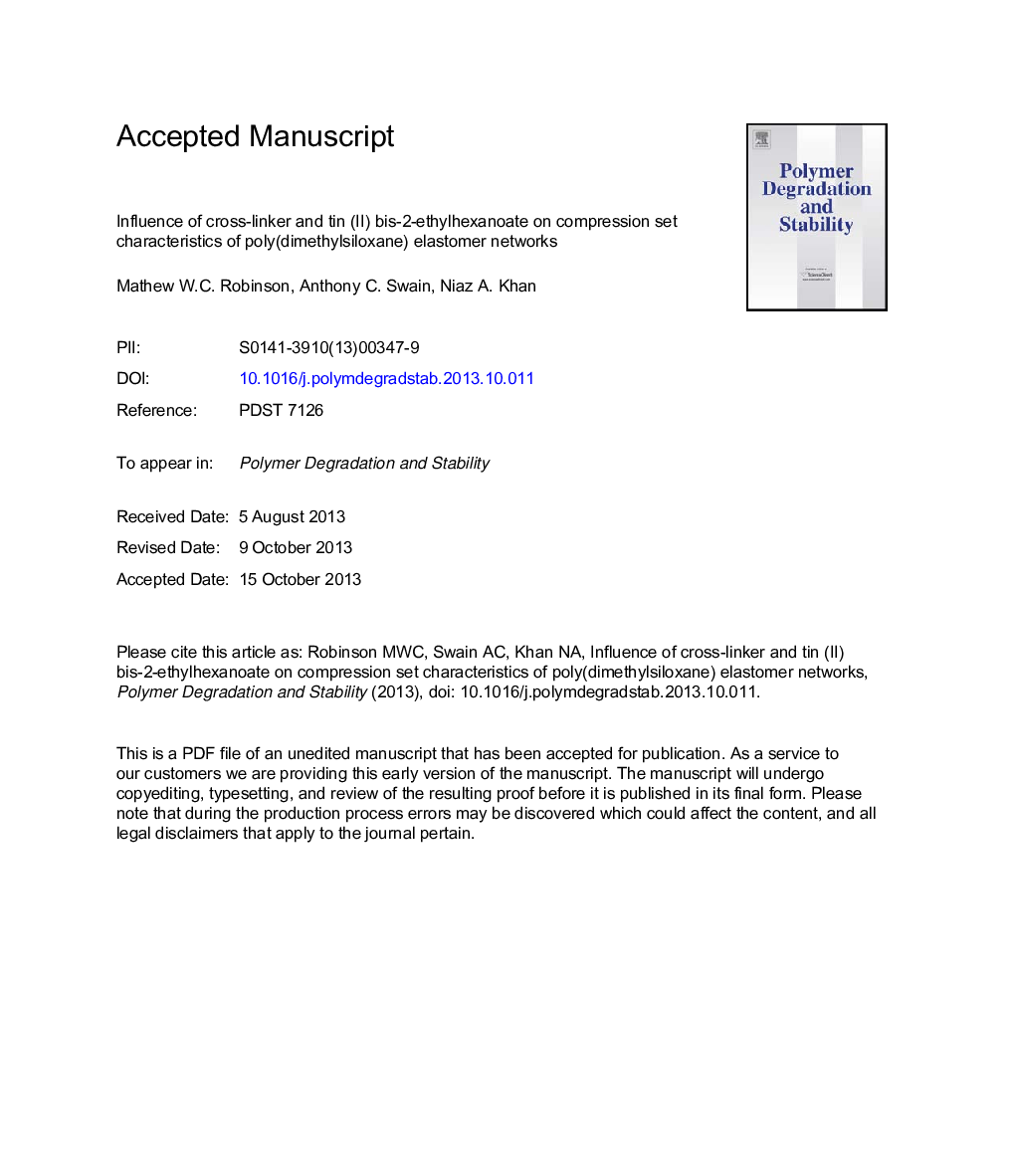| Article ID | Journal | Published Year | Pages | File Type |
|---|---|---|---|---|
| 5201493 | Polymer Degradation and Stability | 2015 | 22 Pages |
Abstract
We have investigated the influence of cross-linker and catalyst loading on the compression set properties of poly(dimethylsiloxane) (PDMS) networks. Solid PDMS networks were prepared from the condensation reaction between hydroxyl-terminated PDMS resins and tetraethoxysilane cross-linker whilst in the presence of tin(II) bis-2-ethylhexanoate catalyst. The relationship between cross-linker loading and mechanical properties was assessed using uniaxial tension, solvent swelling and compression set testing. Two series of networks were prepared with either high or low catalyst loading. Solvent swelling studies highlight the influence of excess catalyst on the polymer network structure and the contribution of residual 2-ethylhexanoic acid to compression set. Networks prepared with lower catalyst loadings displayed increased cross-link density, improved tensile strength and improved compression set resistance. Gas-phase Fourier Transform-Infra Red (FTIR) analysis of the head space produced during heating the PDMS network in a sealed environment indicates that a minimum post-cure regime of 72 h at 115 °C under light vacuum is required to remove the condensation bi-products from network synthesis. Thermogravimetric Analysis-Mass Spectrometry (TGA-MS) combined with Gas Chromatography-Mass Spectrometry (GC-MS) of extracts in toluene show the decomposition of 2-ethylhexanoic acid occurs during high temperature thermal treatment which affords networks with improved compression set resistance.
Related Topics
Physical Sciences and Engineering
Chemistry
Organic Chemistry
Authors
Mathew W.C. Robinson, Anthony C. Swain, Niaz A. Khan,
